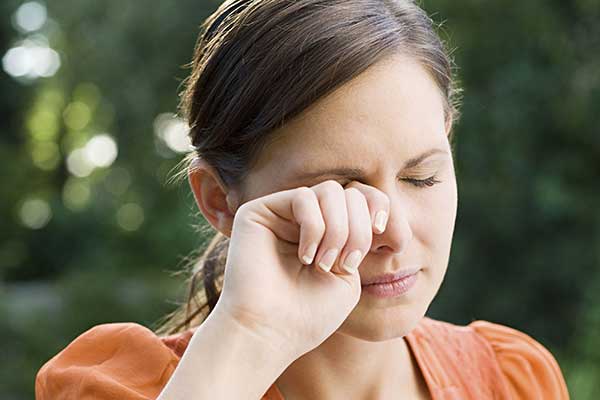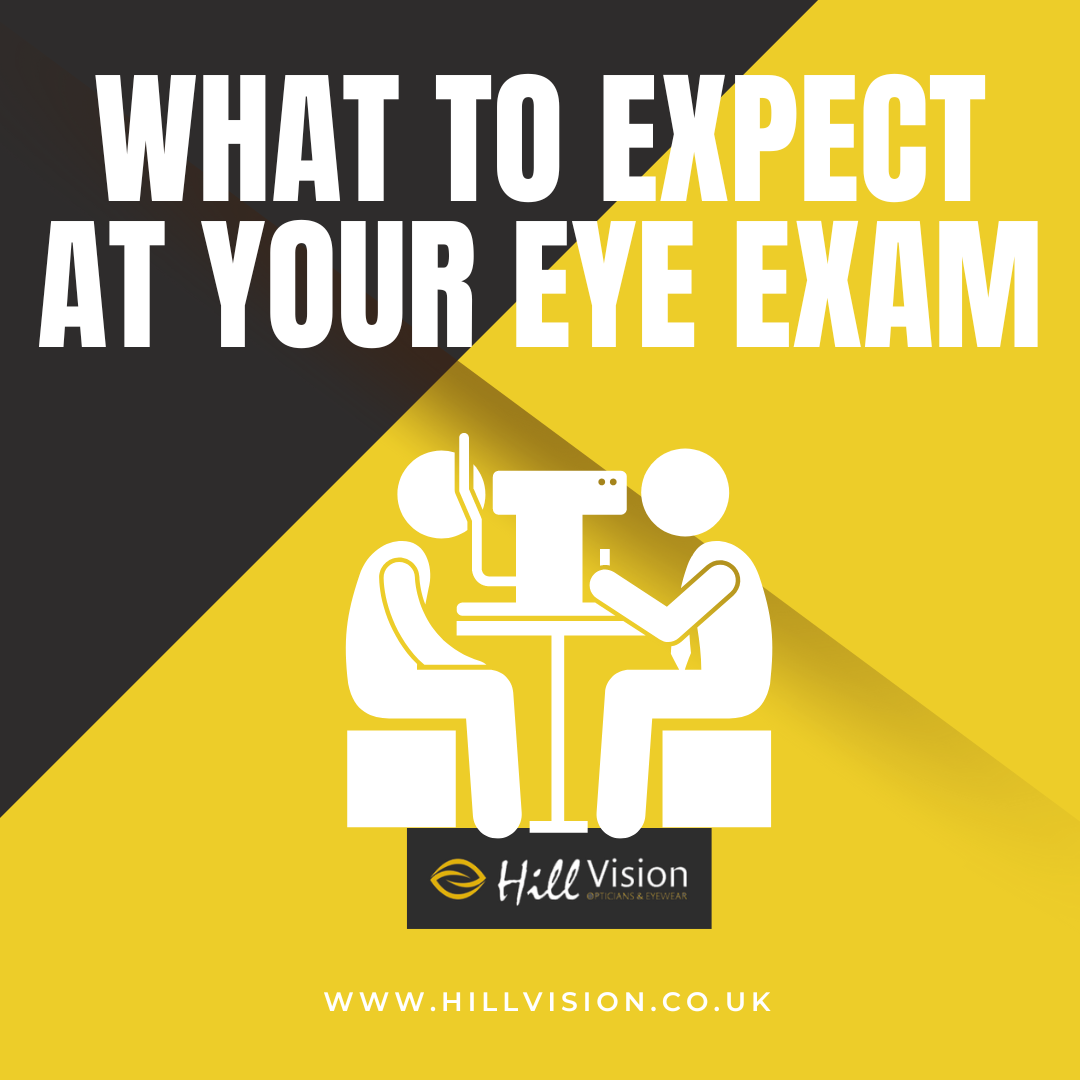Dry eye syndrome, often called dry eye disease, is a chronic and multifaceted eye condition that impacts millions of individuals worldwide. It occurs when the eyes do not receive adequate lubrication or moisture, leading to discomfort and a range of bothersome symptoms. Living with dry eye syndrome can be challenging, but understanding its causes and symptoms is the first step toward effective management.
What Causes Dry Eye Syndrome?
Living with dry eye syndrome can be challenging, but understanding its underlying causes is essential for effective management. Dry eye syndrome can arise from a combination of intrinsic and extrinsic factors, and it’s vital to recognise these triggers to address the condition better.
Intrinsic Factors
Ageing: Natural ageing is one of the most common contributors to dry eye syndrome. Our bodies undergo various changes as we age, including reduced tear production. This age-related decrease in tear production can result in dry eyes, making it a prevalent issue for many seniors with dry eye syndrome.
Gender: Gender plays a significant role in dry eye syndrome, with women being more susceptible to the condition than men. Hormonal fluctuations, especially those related to pregnancy, menopause, and the use of birth control, can increase the risk of developing dry eye syndrome. Understanding these gender-specific factors is crucial for women living with dry eye syndrome.
Hormonal Changes: Hormones play a pivotal role in regulating tear production. Any hormonal changes or imbalances, such as those experienced during pregnancy, menopause, or thyroid disorders, can disrupt the delicate balance of tear film composition. Consequently, hormonal shifts are a notable consideration for individuals with dry eye syndrome.
Extrinsic Factors
Environmental Factors: Environmental conditions can exacerbate dry eye symptoms. Living in arid climates with low humidity levels, exposure to wind, and prolonged screen time can contribute to increased evaporation of tears, leading to dry eyes. Managing environmental factors is crucial for alleviating symptoms for those living with dry eye syndrome.
Medications: Certain medications can have a drying effect on the eyes, leading to dry eye syndrome. Common culprits include antihistamines, decongestants, antidepressants, and medicines for high blood pressure. If you’re living with dry eye syndrome and taking medications, discussing potential side effects with your healthcare provider is advisable.
Underlying Health Conditions: Several underlying health conditions can contribute to dry eye syndrome, such as autoimmune diseases like Sjögren’s syndrome, rheumatoid arthritis, and lupus, which can affect the body’s ability to produce tears. Additionally, conditions such as diabetes and thyroid disorders may increase the risk of dry eyes. Recognising and managing these underlying health issues is crucial for those with dry eye syndrome.
Understanding the complex interplay of intrinsic and extrinsic factors that can lead to dry eye syndrome is essential for individuals seeking relief. By identifying the specific causes relevant to your situation, you can work with healthcare professionals to develop a personalised treatment plan, which may include innovative solutions like dry eye plugs to address this common eye condition.

Why Do You Have Dry Eye Syndrome?
Living with dry eye syndrome can be perplexing, but understanding the contributing risk factors can provide valuable insights into the condition’s origins. Dry eye syndrome may develop due to various factors, including personal health history, environmental triggers, and the use of certain medications.
Identifying Risk Factors
Personal Health History: One of the fundamental steps in comprehending why you have dry eye syndrome is assessing your health history. Certain medical conditions may increase your risk of developing dry eyes. If you have an account of these conditions, it’s essential to be vigilant about the potential onset of dry eye syndrome and discuss it with your healthcare provider.
Environmental Triggers: The environment you live and work in can significantly trigger dry eye syndrome. For instance, individuals residing in arid or windy climates may be more prone to experiencing dry eyes due to increased tear evaporation. Additionally, prolonged exposure to air conditioning or heating systems can contribute to developing dry eye symptoms. Understanding these environmental triggers is essential for those living with dry eye syndrome.
Medications: Medications can often be the culprits behind dry eye syndrome. If you’re taking medications for various health conditions, some may have side effects contributing to dry eyes. Antihistamines, decongestants, and medications for high blood pressure are among the common medications known to induce dryness in the eyes. If you suspect that your medications may be causing or exacerbating dry eye symptoms, consult your healthcare provider for alternative options.
Lifestyle Factors: Lifestyle choices can also influence your risk of developing dry eye syndrome. Smoking, for example, has been associated with an increased likelihood of dry eyes. Additionally, habits like excessive screen time or prolonged reading can reduce blink frequency, leading to decreased tear distribution across the eyes.
Understanding these risk factors is crucial for individuals living with dry eye syndrome. You can take proactive steps to manage and alleviate symptoms by identifying potential contributors to your condition. One effective solution that has gained popularity among those seeking relief from dry eye symptoms is using dry eye plugs.
Dry Eye Plugs: A Deeper Dive
Dry eye plugs, also known as punctal plugs or occlusion devices, are a promising option for individuals with dry eye syndrome. These tiny, biocompatible devices are inserted into the tear drainage ducts (puncta) to block the drainage of tears. By doing so, dry eye plugs help retain natural tears on the eye’s surface, providing much-needed moisture and relief from dryness.
These plugs come in different materials and designs to suit individual preferences and the severity of dry eye symptoms. They are typically well-tolerated and can significantly enhance the comfort of those with dry eye syndrome.
Living with Dry Eye Syndrome: Coping Strategies
Living with dry eye syndrome can be a daily challenge, but various coping strategies and treatments are available to help you regain comfort and clarity in your vision. This section will explore these strategies and delve into the world of dry eye plugs, a promising solution for managing this common eye condition.
Lifestyle Adjustments
Humidifiers and Air Quality: Environmental factors play a crucial role for individuals living with dry eye syndrome. Consider using a humidifier to add moisture to the air in your home or workspace, especially during dry seasons or in arid climates. Additionally, maintaining good indoor air quality by avoiding smoke and reducing exposure to allergens can minimise eye irritation.
Blinking Exercises: Blinking is a natural mechanism that helps distribute tears evenly across the eye’s surface. However, prolonged screen time and reading can lead to reduced blink frequency. Practice blinking exercises to ensure your eyes stay adequately moist. Take regular breaks from screens and consciously blink several times to promote tear production.
Nutritional Choices: Your diet can influence your eye health. Incorporate foods rich in omega-3 fatty acids, such as salmon, flaxseeds, and walnuts, which may help reduce inflammation and promote tear production. Staying hydrated by drinking enough water also plays a crucial role in maintaining eye moisture.
Over-the-Counter Solutions
Artificial Tears: Over-the-counter artificial tears are a go-to remedy for individuals with dry eye syndrome. These lubricating eye drops can provide immediate relief by mimicking the composition of natural tears. Keep a bottle handy and use it to alleviate dryness and discomfort.
Lubricating Eye Drops: Lubricating eye drops are designed to provide longer-lasting relief. They create a protective barrier on the eye’s surface, reducing evaporation and maintaining moisture. Consult your eye care professional to select the right lubricating eye drops.
Advanced Treatment Options
Prescription Medications: In severe dry eye syndrome cases, your eye care provider may recommend prescription medications to address underlying causes. These medications may include anti-inflammatory drugs or medicines that stimulate tear production. Discuss the potential benefits and risks with your healthcare provider.
In-Office Procedures: In-office procedures are available for individuals seeking more advanced treatment. These may include techniques like punctal occlusion, where specialised plugs, also known as dry eye plugs, are inserted into the tear drainage ducts (puncta). This approach helps retain natural tears on the eye’s surface, providing long-lasting relief.
Dry Eye Plugs: A Deeper Dive
What Are Dry Eye Plugs? Dry eye plugs, also referred to as punctal plugs or occlusion devices, are tiny, biocompatible devices placed into the puncta, the tear drainage ducts in the corners of your eyes. These plugs effectively block the drainage of tears, allowing natural tears to stay on the eye’s surface for an extended period.
How Do They Work? Once inserted, dry eye plugs maintain the tear film on the eye’s surface, preventing excessive tear drainage and ensuring that your eyes remain adequately lubricated, reducing the symptoms of dry eye syndrome.
Benefits and Considerations:
Dry eye plugs offer several advantages for individuals living with dry eye syndrome. They are minimally invasive, well-tolerated, and can provide long-lasting relief. However, it’s essential to discuss dry eye plugs with your eye care professional to determine if they suit your specific condition.
Incorporating these coping strategies and considering advanced treatments like dry eye plugs can significantly improve your quality of life while living with dry eye syndrome. In the next section, we’ll explore when to seek professional help and introduce you to Hill Vision, your experts in Buckinghamshire, who can provide specialised care and guidance for managing this condition.
Seeking Professional Help for Dry Eyes
Living with dry eye syndrome can be a persistent and uncomfortable experience. While lifestyle adjustments and over-the-counter solutions can relieve some, others may require professional intervention to manage their symptoms effectively. In this section, we’ll discuss when to consult an optician or ophthalmologist and introduce you to Hill Vision, your experts in Buckinghamshire who specialise in dry eye syndrome care.
When to Consult an Optician or Ophthalmologist
Persistent Symptoms: If you’ve been living with dry eye syndrome and find that your symptoms persist despite using over-the-counter remedies, it may be time to seek professional help. Persistent dryness, itching, burning, and redness could indicate an underlying issue requiring thorough evaluation.
Impact on Daily Life: Dry eye syndrome can significantly impact your daily life, making tasks like reading, working on a computer, or even driving uncomfortable. If your symptoms are affecting your ability to perform routine activities, it’s essential to consult with an eye care professional who can tailor a treatment plan to your specific needs.
Customised Treatment Plans: Opticians and ophthalmologists are trained to diagnose and treat various eye conditions, including dry eye syndrome. When you consult a professional, they can assess the severity of your condition, identify contributing factors, and develop a personalised treatment plan. This plan may include advanced treatments such as dry eye plugs, prescription medications, or in-office procedures.
Hill Vision: Your Dry Eye Syndrome Experts in Buckinghamshire
Visit Hill Vision for Specialized Care: When seeking specialised care for dry eye syndrome in Buckinghamshire, look no further than Hill Vision. Their team of experienced opticians and ophthalmologists is dedicated to providing top-notch care to individuals with dry eye syndrome. Whether you’re dealing with mild discomfort or more severe symptoms, they have the expertise and resources to help.
Expert Opticians in Buckinghamshire: Hill Vision boasts a team of expert opticians in Buckinghamshire who understand the unique challenges of living with dry eye syndrome. They offer various services, including comprehensive eye evaluations, specialised diagnostic tests, and personalised treatment plans. By visiting Hill Vision, you can access the latest dry eye syndrome care advancements and receive guidance tailored to your needs.
Don’t let dry eye syndrome hinder your quality of life. If you’ve been living with dry eye syndrome and need professional assistance, contact Hill Vision in Buckinghamshire. Their team is committed to helping you find relief from the discomfort and inconvenience of dry eyes.
In conclusion, consulting a professional optician or ophthalmologist is vital in effectively managing dry eye syndrome. By seeking expert care, you can receive a customised treatment plan, explore advanced options like dry eye plugs, and regain comfort in your day-to-day life.
Living with dry eye syndrome can be challenging, but you can manage its symptoms effectively with the proper knowledge and access to appropriate treatments. If you seek expert guidance and solutions tailored to your needs, don’t hesitate to contact Hill Vision. With their experienced opticians in Buckinghamshire, you can regain comfort and clarity in your vision.






